
2020, also known as “the remote year” or “the zoom year” has finally reached its end! It was a difficult year, and even if we don’t expect sudden improvements, we are certainly happy to leave it behind. And we start 2021 with hope – well grounded hope based on science!
In whatever way you look at it, 2020 was different from anything we lived before. So we cannot simply forget about it and move on, or even less “go back to normal”, as naively wishes our Christmas card. For one thing, this strange variable we call “time” and “going back” are two things we are not yet very good at putting together.But the other reason is that we have also learned useful things. It is now time to figure out how to put together the good things we had before and what we have learned on the way.
And what can we do about this in cLIP? We can celebrate the end of 2020 and welcome 2021, sharing some news from the old year and some useful information for the new one. With everyone’s help, we propose to reflect on what we have learned from the pandemic times, what should go back to the “old normal” if possible, and what we now know how to do in better ways. We also select some highlights from LIP’s 2020 publications — please share your views with us!
Happy 2021, with good health, peace, and lots of opportunities to enjoy life and science!
INSTITUTIONAL & PRACTICAL INFO
Some dates to remember in 2021
29 Jan Deadline to fill group reports in the DB
11 Feb International Day of Women in Science
Feb/Mar International Masterclasses (online)
22 Mar Data Science School and Symposium
Apr LIP’s Advisory board meeting (date TBC)
9 May LIP’s 35th anniversary
30 Aug PANIC conference
5 Sep CERN PT language Teachers Programme
6 Sep IDPASC school in Nazaré (TBC)
People
- ATLAS PhD Grant
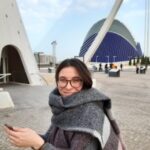 Ana Luísa Carvalho, PhD student in the LIP ATLAS Group, is one of the winners of the ATLAS PhD Grants. Congratulations! Every year, the ATLAS Collaboration awards such grants to three PhD students. The prize finances two years of the PhD, one at CERN and the other at the institution of origin.
Ana Luísa Carvalho, PhD student in the LIP ATLAS Group, is one of the winners of the ATLAS PhD Grants. Congratulations! Every year, the ATLAS Collaboration awards such grants to three PhD students. The prize finances two years of the PhD, one at CERN and the other at the institution of origin. - Reasearchers’ Night
 In 2020, the European Researchers Night was moved to the end of the November and happened during the Science and Technology week. At LIP, was a great online event, developed in a close collaboration between Braga, Coimbra and Lisboa, and in which young researchers had a remarkable role. Learn more about the program inside…
In 2020, the European Researchers Night was moved to the end of the November and happened during the Science and Technology week. At LIP, was a great online event, developed in a close collaboration between Braga, Coimbra and Lisboa, and in which young researchers had a remarkable role. Learn more about the program inside… - PhD and MSc 2020
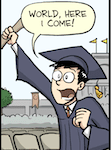 Congratulations to the LIP PhD students who discussed their theses in 2020: Miguel Moita, João Marcos, Ricardo Luz, Oleksii Toldaiev, Giles Strong. Go inside for details. Congratulations also to the many MSc students who concluded their theses at LIP this year!
Congratulations to the LIP PhD students who discussed their theses in 2020: Miguel Moita, João Marcos, Ricardo Luz, Oleksii Toldaiev, Giles Strong. Go inside for details. Congratulations also to the many MSc students who concluded their theses at LIP this year! - Mechanical Workshop
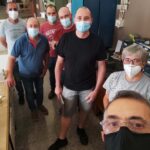 Douglas Lima, computer engineer from Brazil, joined LIP’s MW in Jan 2016 and stayed until Aug 2020, programming and operating the CNC lathe. Combining solid technical knowledge and excellent human qualities, Douglas greatly contributed to the MW. Jorge Moreira, mechanical engineer, joined LIP’s MW and received specific training from Douglas. He is now in charge of the CNC lathe.
Douglas Lima, computer engineer from Brazil, joined LIP’s MW in Jan 2016 and stayed until Aug 2020, programming and operating the CNC lathe. Combining solid technical knowledge and excellent human qualities, Douglas greatly contributed to the MW. Jorge Moreira, mechanical engineer, joined LIP’s MW and received specific training from Douglas. He is now in charge of the CNC lathe. - Marta Castro
 The LIP Distributed Computing and Digital Infrastructures group has a new member in Lisbon. Marta Castro will be involved in national and international innovation and research projects. Marta will work on software development and contribute to the IT support.
The LIP Distributed Computing and Digital Infrastructures group has a new member in Lisbon. Marta Castro will be involved in national and international innovation and research projects. Marta will work on software development and contribute to the IT support. - Rita Saraiva
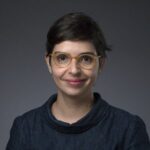 Support to projects at LIP has been reinforced with a new member in Lisboa. Rita will share her time between the management of the ERC “FARE – Fake News and Real People”, with Joana G. Sá, and pre-award project support in the framework of LIP’s Administrative services.
Support to projects at LIP has been reinforced with a new member in Lisboa. Rita will share her time between the management of the ERC “FARE – Fake News and Real People”, with Joana G. Sá, and pre-award project support in the framework of LIP’s Administrative services.
Interacting with cLIP
Looking back to 2020: pandemic, telework, life in zoom and all that…
During the lockdown, in the April issue of cLIP we promoted a telework survey “Working from home or at home trying to work: the challenges of telework” and also a competition on the best telework photo or story. The results (of both) were published in the May issue of cLIP .
But these were the early days! I’m sure we all know a lot more about telework now… and funny stories and pictures must have popped out, sometime, somewhere…. do share some of them with us!
* there is a small Christmas gift for those who participate (provided you identify yourself, of course)
Science at (virtual) LIP and beyond
- First observation of top quarks in heavy ion collisions
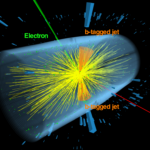 The analysis was motivated by a theoretical paper co-authored by LIP researchers that proposes a unique method to study the time evolution of the quark gluon plasma.
The analysis was motivated by a theoretical paper co-authored by LIP researchers that proposes a unique method to study the time evolution of the quark gluon plasma. - Neutrinos@LHC
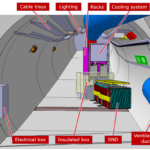 The prototype of a neutrino detector developed for the SHiP experiment is set to be installed at the LHC before the next run. The letter of intent, subscribed by LIP, has been recently submitted to CERN.
The prototype of a neutrino detector developed for the SHiP experiment is set to be installed at the LHC before the next run. The letter of intent, subscribed by LIP, has been recently submitted to CERN. - LIP in AMBER
 A proposal for the participation of LIP in the future COMPASS++/AMBER collaboration has been presented by the LIP COMPASS group and approved by the LIP Scientific Council.
A proposal for the participation of LIP in the future COMPASS++/AMBER collaboration has been presented by the LIP COMPASS group and approved by the LIP Scientific Council. - Experiment coordinated by LIP now approved by ESA
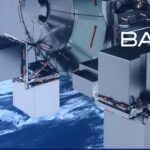 The analysis of space environment effects on detector materials is essential to design future gamma ray missions. That is the goal of the experiment “Ageing of Ge/Si and CZT samples for sensors and Laue lenses”, which will be installed outside the ISS.
The analysis of space environment effects on detector materials is essential to design future gamma ray missions. That is the goal of the experiment “Ageing of Ge/Si and CZT samples for sensors and Laue lenses”, which will be installed outside the ISS. - The first year of EOSC-synergy
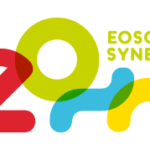 The H2020 project EOSC-synergy, which LIP is part of, celebrated its first year with a description of achievements towards deploying the European Open Science Cloud. Developments made in Portugal are highlighted.
The H2020 project EOSC-synergy, which LIP is part of, celebrated its first year with a description of achievements towards deploying the European Open Science Cloud. Developments made in Portugal are highlighted. - LIP in the EuroCC project
 In September 2020 began one of the most emblematic European projects in the area of high performance computing, EuroCC, in which LIP is involved.
In September 2020 began one of the most emblematic European projects in the area of high performance computing, EuroCC, in which LIP is involved. - CERN: for a better world
 The impact of CERN is known to reach far beyond particle physics or fundamental science. Two 2020 examples are the recently announced new open data policy and CERN’s Environmental Report, publicly released for the first time this year
The impact of CERN is known to reach far beyond particle physics or fundamental science. Two 2020 examples are the recently announced new open data policy and CERN’s Environmental Report, publicly released for the first time this year - Top-10 Physics World 2020 Breakthrough
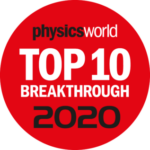 In this top-10 is the research on mixed beams particle therapy by Heidelberg´s team lead by João Seco, partner of LIP in ProtoTera, the proton therapy facility to be installed in Portugal.
In this top-10 is the research on mixed beams particle therapy by Heidelberg´s team lead by João Seco, partner of LIP in ProtoTera, the proton therapy facility to be installed in Portugal. - LIP-News Bulletin #17
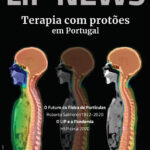 In this issue we highlight two themes important far beyond particle physics: ProtoTera, the project to create a proton therapy center in Portugal; and the approval of the revision of the European Strategy for Particle Physics.
In this issue we highlight two themes important far beyond particle physics: ProtoTera, the project to create a proton therapy center in Portugal; and the approval of the revision of the European Strategy for Particle Physics.
Looking back to 2020:
LIP publications highlights 
In the May issue of cLIP we asked the question “Did we work less during lockdown?” and showed the graphs that supported the answer: “No! At least this is not visible in computing resources usage graphs“. Now, at the end of the year, let’s have a look at an important part of the outcome of this work: publications!
This time the challenge was to highlight a paper or two published by the group in 2020. The reasons for the choice vary from group to group, and there was not much time to wait for the replies, so here is the incomplete, prelimininary list.
From CMS, two papers containing the work of the two PhD students who completed their theses in 2020
Alex Toldaiev, on the measurement of the top quark pair production cross section in dilepton final states containing one tau lepton in pp collisions at 13 TeV
Giles Strong, on the impact of deep-learning techniques to the performance of classification models in an experimental high-energy physics use case
From ATLAS, one of the highlights is certainly about the Higgs, and the second on the searches for New Physics
The paper on the measurement of the associated production of a Higgs boson decaying into b-quarks with a vector boson in pp collisions at 13 TeV submitted to Physics Letters B is certainly a highlight
“Finding New Physics without learning about it: anomaly detection as a tool for searches at colliders”, a BigDataHEP project paper with authors from the ATLAS group, was the choice of cLIP
From the productive Pheno group, cLIP picked two papers from young researchers
Paper by Liliana Apolinário and Carlota Andres (a newcomer at LIP), with a colleague from IGFAE (Santiago de Compostela), which solves problems in the theoretical modeling of jet quenching
Paper by Maria Ramos, from Minho, on dark matter in composite Higgs models, composite dark matter phenomenology in the presence of lighter degrees of freedom
Moving to cosmic rays, charged and neutral, we highlight the following papers
From AMS the measurement of the flux of primary nuclei, Ne, Mg e Si. Above 86.5 GV the rigidity dependence of their spectra is different from that of He, C, and O, showing there are two classes of primary cosmic rays
At the highest energies, members of the LIP-Auger group use showers produced by cosmic rays in the atmosphere to study hadronic interactions at very high energies, like in the paper on the energy spectrum of neutral pions in proton-air interactions recently accepted by Physical Review D
From LATTES/SWGO, we highlight a paper on innovative reconstruction methods for large field-of-view gamma-ray observatories, such as the SWGO itself, accepted by the European Physics Journal C
From the Neutrino Physics group, three publications with an important participation from LIP, reflecting the different stages of the experiments
Paper on hep solar neutrinos using all three phases of SNO
Measurement of neutron-proton capture in the SNO+ water phase
Detector R&D: LIP is world-leader in the development of RPC-based detectors. The work developed in the last few years greatly enlarged the range of application of RPCs. This is illustrated by the two selected papers
“Towards Sealed Resistive Plate Chambers”, suggested by Paulo Fonte. Sealed RPCs will clearly be a breakthrough in the field
“Multilayer 10B-RPC neutron imaging detector”, proposed by Luís Margato, discusses an RPC-based, high resolution, helium-free alternative for neutron detection

